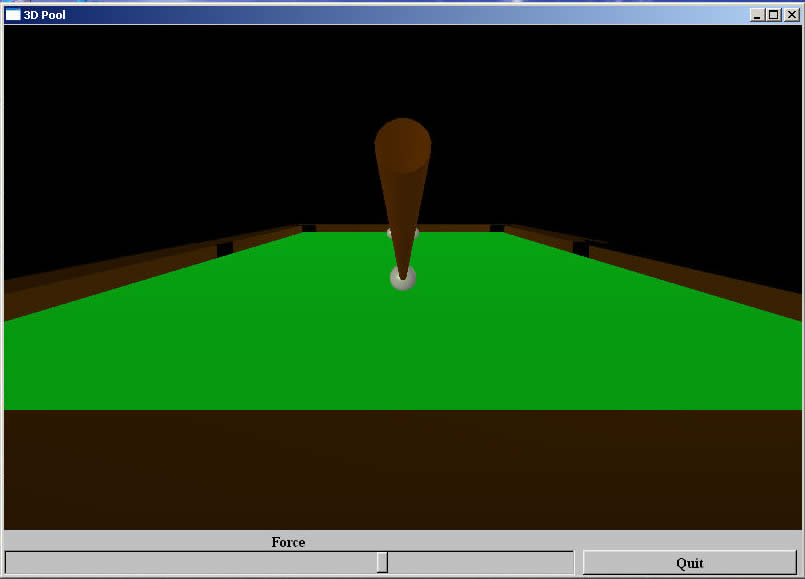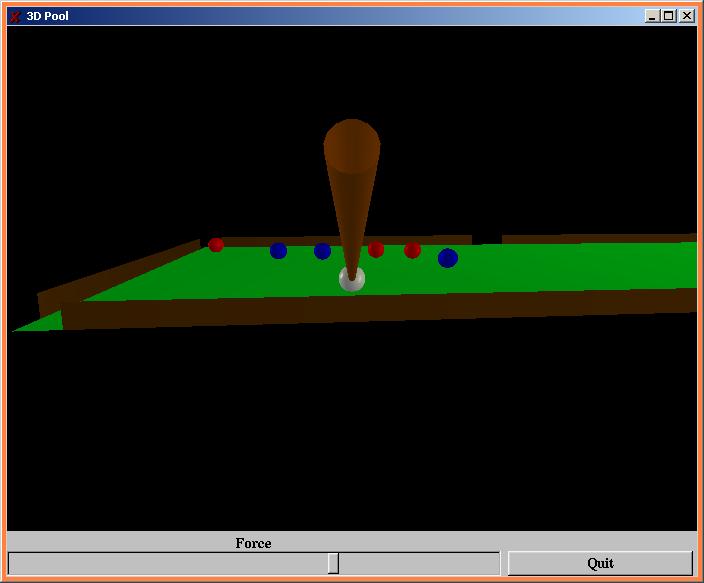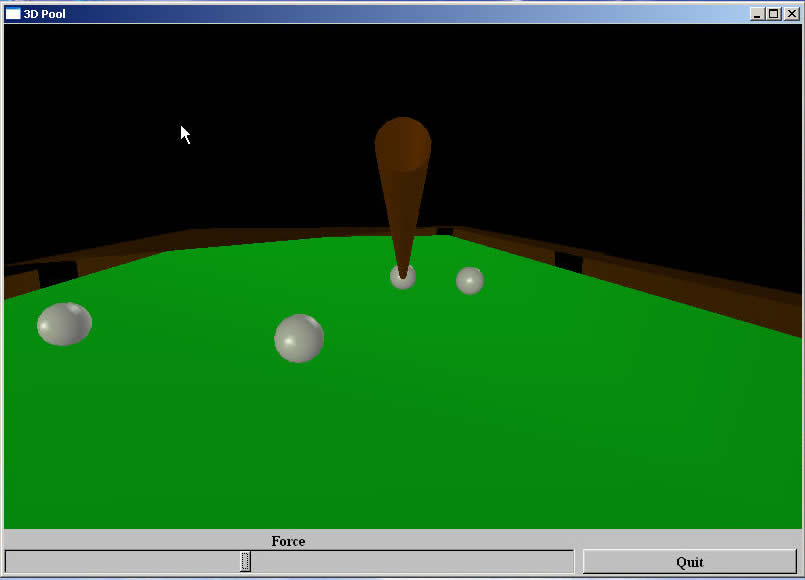

Final Project - 3D Pool Simulator (7-Ball Physics)
For my final project I decided to implement a 3-dimensional pool game. As a program modelling physically-based (physics-based) behavior, I felt that it was appropriate as a final project for this class. This models the motions and actions of billiard (pool) balls in a simulated, 3-D setting. Unfortunately, at the time, I hadn't really fully considered the planning and work that would go into such a project. The physics seemed straightfoward when thinking about it, but when I got into it, I realized that it was a bit more complicated than I'd originally guessed. As a result, the actual "game" aspect of the project was not realized, but I did eventually get very realistic looking results regarding the behavior of the balls on the table. |


Usage |
||||
- This program is very straightfoward and easy to use. All interactions are done between the mouse and keyboard (well, spacebar). MOUSE INTERACTIONS:
KEYBOARD INTERACTIONS:
|
The Physics Involved... |
|||
The physical calculations involved in this program were the most challenging part of the program. As an animator, one must always think in terms of frames. Before a new frame is drawn, new physical calculations must be performed. For a single-ball model this is very-easy to implement, but we must consider that we may have many balls (in pool, up to 16, but it should still work with more balls.
|

| Final Words: I had much loftier goals for this assignment that did not get implemented. Originally I wanted to have a clever variation of an 8-Ball game in which you could apply lots of cool forces and play around with the table orientation, etc. I basically wanted the program to have many more features than it ended up with. About 95% of the endless, infinite number of hours I spent on this went into getting the physics right, so was unable to complete the rest. |